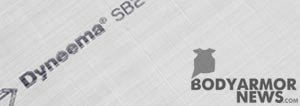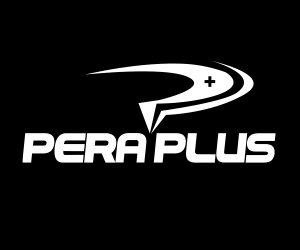Body Armor Materials
Several global manufacturers are leading the charge in developing and refining materials used in body armor. These companies are engaged in fierce competition to create materials that are as light and durable as possible. In combat scenarios, even a minor difference in vest weight can have life-or-death implications—affecting a soldier’s ability to carry essential supplies such as water, food, or ammunition.
Kevlar®: The Pioneer of Modern Body Armor
DuPont™ has been a cornerstone in the development of body armor materials for over four decades. First developed in 1965, Kevlar® was the inaugural material used in modern concealable bulletproof vests. As a man-made hydrocarbon fiber, Kevlar® combines high strength with low weight, chemical resistance, cut resistance, and flame resistance. It does not melt, soften, or flow under heat and remains unaffected by immersion in water.
Kevlar® has been invented by Stephanie Kwolek in 1964 and, by 1971, modern variants of Kevlar® were being introduced. Kevlar 29, introduced in the early 1970s, was the first generation of body armor materials developed by DuPont and helped to make the production of a flexible, concealable bulletproof vest practical for the first time. In 1988, DuPont introduced the second generation of Kevlar fiber, called Kevlar 129. According to DuPont, a bulletproof vest with this fabric offered increased ballistic protection capabilities against high energy rounds such as the 9mm FMJ. In 1995, Kevlar Correctional was introduced, which provides puncture resistant technology to both law enforcement and correctional officers against stabbing weapons.
An addition to the Kevlar line is Kevlar Protera, which DuPont made available in 1996. DuPont contends that the Kevlar Protera is a high-performance fabric that allows lighter weight, more flexibility, and greater ballistic protection in body armor materials due to the molecular structure of the fiber. The tensile strength and energy-absorbing capabilities of Kevlar Protera have been increased by the development of a new manufacturing process.
Kevlar® XP™ is one of DuPont’s more recent developments. This patented technology provides a 15% reduction in back face deformation, reducing trauma to the wearer. Kevlar® XP™, used in soft body armor technology, helps manufacturers provide a more comfortable vest design with a 10% reduction in overall weight. DuPont™ Kevlar® XP™S104 maintains its strong ballistic performance and comfort even in wet conditions; ideal when working in tropical climates or when performance is required in wet conditions.
Kevlar EXO™: The latest addition to the Kevlar® line, offering unprecedented flexibility and lightweight design while maintaining high levels of ballistic protection. Kevlar EXO™ is optimized for modern military and law enforcement needs, enhancing comfort during extended wear.
Honeywell’s Advanced Ballistic Materials
Honeywell International has been a key player in ballistic material innovation, producing renowned materials such as Spectra Shield®, Gold Shield®, and Gold Flex®.
Spectra Shield®
Spectra Shield® products have been protecting military and law enforcement personnel for the past 20 years, and that history of continuous innovation has resulted in the Spectra Shield® II product line.
SR-3124, a Spectra Shield® II hard armor product, incorporates high-strength Spectra® 3000 fiber into a hard armor shield construction, providing the highest levels of protection for breastplate, helmet, and vehicle applications.
SA-3118 and SA-3113 are the Spectra Shield® II soft armor products, providing well known ballistic protection for military and law enforcement vest applications. SA-3118 maximizes ballistic performance, while SA-3113 was designed for added flexibility and comfort, while maintaining high levels of performance in body armor materials.
SR-1214 is the standard Spectra Shield® hard armor product used in plate, helmet and vehicle applications throughout the world.
SA-1211, continues to be used in some of the most demanding body armor materials applications and is designed to meet the comfort and flexibility demands of the user, while maintaining strong ballistic performance and reducing the effects of blunt trauma.

Gold Flex® and Gold Shield®
Gold Flex® is a fabric manufactured by Honeywell from synthetic fiber and often used in ballistic vests. AlliedSignal also uses the Shield Technology process to manufacture another type of shield composite called Gold Shield. Gold Shield is manufactured using aramid fibers in place of the Spectra fiber. Gold Shield is currently made in three types: Gold Shield LCR and GoldFlex, which are used in concealable bulletproof vests and Gold Shield PCR, which is used in the manufacture of hard armor, such as ballistic panels and helmets.

AKZO inventor of the Twaron body Armor material
In 1972, AKZO came out with its first aramid version called Arenka®. This fiber was later renamed Twaron. AKZO has produced various forms of its aramid fiber, Twaron, for bullet proof vests . According to Akzo Nobel, this fiber uses a 1,000 or more finely spun single filaments that act like an energy sponge, absorbing a bullet’s impact and quickly dissipating that energy through adjacent fibers. Due to the fact more filaments are used, the impact is dispersed more quickly. Akzo claims their patented Microfilament technology allows maximum energy absorption at minimum weights while enhancing comfort and flexibility.
Akzo Nobel maintains that the use of Twaron in a bulletproof vest significantly reduces the overall weight of the finished product, thus making the bullet proof vest more comfortable. Akzo also contends that stitching panels made from layers of Twaron is largely unnecessary and that the lack of stitching contributes to a lighter weight and softer feel of the body armor materials while affording the same level of protection.
In 2000 Akzo Nobel sold the rights to the Twaron brand to Teijin Ltd. In 2007, Teijin renamed the product Teijin Aramid and now markets their aramid fiber worldwide under four different brands. Twaron is the most famous and easily recognized brand.
Dyneema®
Another fiber used in the manufacture of ballistic panels is Dyneema®. Like many body armor materials with unusual properties, Dyneema was discovered by accident in a lab and nearly forgotten. In 1963, Albert Pennings and Ron Koningsveld, were rearranging the molecules of polyethylene using a crystallization process. Stirring a polyethylene solution mechanically, they found crystals forming on the stirring rods. It was the first time polyethylene crystals formed through stirring rather than cooling. The result was a product where the molecules were uniformly aligned, leading to very strong binding between the individual molecules. After its initial discovery Paul Smith and Piet Lemstra from DSM further refined the fibre.
Manufactured in the Netherlands, Dyneema® is a polyethylene fiber with an extremely high strength-to-weight ratio (a 1-mm-diameter rope of Dyneema can bear up to a 240-kg load). The fiber is light enough that it can float on water, and has high energy absorption characteristics. Dyneema. Today Dyneema® is one of the more popular body armor materials among premium body armor manufacturers. Dyneema® Force Multiplier Technology is the latest innovation from DSM Dyneema resulting in vests that are up to 25% lighter.









